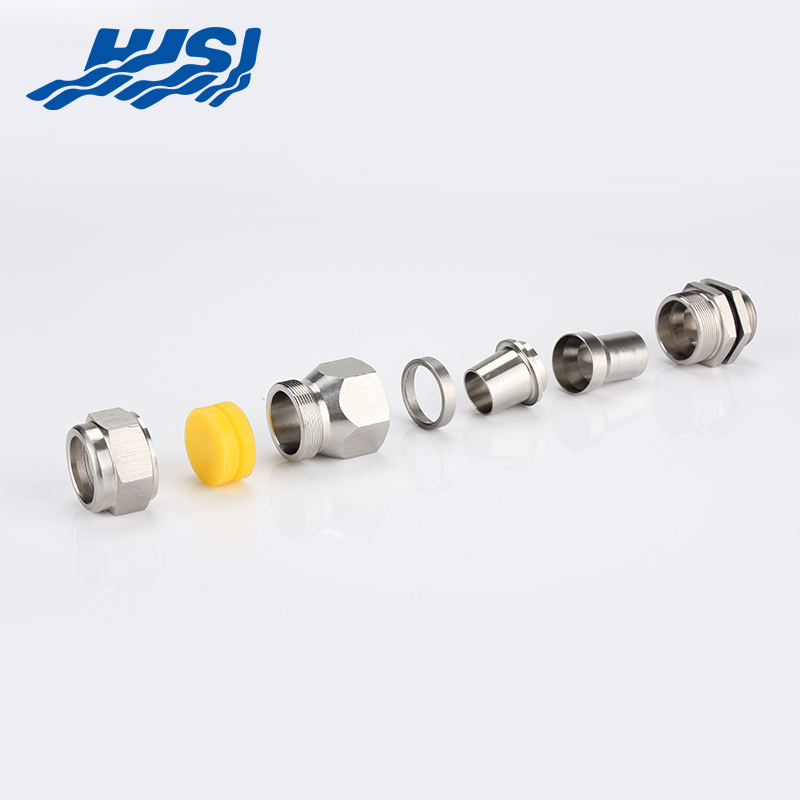When it comes to ensuring secure, long-lasting cable connections in harsh environments, Stainless Steel Cable Gland is often the most reliable choice. Designed to withstand aggressive weather conditions, chemical exposure, and mechanical stress, its superior corrosion resistance sets it apart from other types of cable glands. This article explores how Stainless Steel Cable Gland excels in corrosion resistance, supported by real-world applications and industry use cases.
Why Corrosion Resistance Matters?
Corrosion is a natural process that degrades metal over time due to chemical reactions with environmental elements like oxygen, salt, and moisture. For cable connection systems, corrosion can lead to loss of sealing performance, electrical failure, or even safety hazards.
Stainless Steel Cable Gland solves this issue with its exceptional resistance to oxidation and chemical attack. Manufactured using 304 or 316 stainless steel, it performs exceptionally well in demanding conditions such as marine, chemical processing, and outdoor electrical installations.
The corrosion resistance of Stainless Steel Cable Gland primarily comes from the chromium content in stainless steel. Both 304 and 316 grades include at least 18% chromium, which reacts with oxygen to form a protective passive film on the surface.
In the case of 316 stainless steel, the addition of molybdenum enhances resistance to chlorides and acidic environments, making it ideal for coastal or industrial installations. This small chemical difference greatly impacts long-term durability and reliability.
One clear example of the advantages of Stainless Steel Cable Gland is found in offshore wind farm installations. These environments are exposed to high humidity, salt spray, and fluctuating temperatures. Traditional brass or nylon cable glands often degrade within a few years.
In contrast, operators who switched to Stainless Steel Cable Gland reported that their installations remained fully sealed and operational after more than 6 years of continuous service without visible corrosion. This directly translates to reduced maintenance costs and higher equipment uptime.
A mid-sized chemical plant near Hamburg underwent a major upgrade to its instrumentation system in 2021. The engineering team specified Stainless Steel Cable Gland for all new junction boxes located in areas exposed to sulfuric acid fumes and alkali-based cleaners.
Routine inspections conducted 24 months later showed no signs of pitting, rust, or thread damage on the glands. The plant's electrical supervisor noted that the decision to standardize Stainless Steel Cable Gland saved them from having to replace degraded components annually, as had been the case with aluminum and nickel-plated options.

Adaptability Across Industries
The corrosion-resistant properties of Stainless Steel Cable Gland make it suitable not only for marine and chemical industries but also for:
Renewable energy installations
Pharmaceutical manufacturing
Outdoor telecom stations
Water treatment facilities
Food processing plants
Each of these sectors demands high cleanliness, durability, and protection from environmental stressors. In all these applications, Stainless Steel Cable Gland has proven to be a cost-effective solution over time.
Installation and Maintenance Benefits
Apart from resisting corrosion, Stainless Steel Cable Gland is designed for ease of installation. The material retains its thread integrity over repeated tightening and loosening cycles, unlike some softer metals. Additionally, the surface remains smooth and unreactive, minimizing wear on sealing components and reducing the risk of leaks or contamination.
Whether you're managing an offshore platform or installing control cabinets in a high-humidity plant room, corrosion resistance is a non-negotiable requirement. Stainless Steel Cable Gland meets this demand consistently with its proven material integrity, chemical resistance, and long service life. Backed by real-world performance, it remains the go-to solution for professionals seeking reliable and durable cable management in challenging environments.